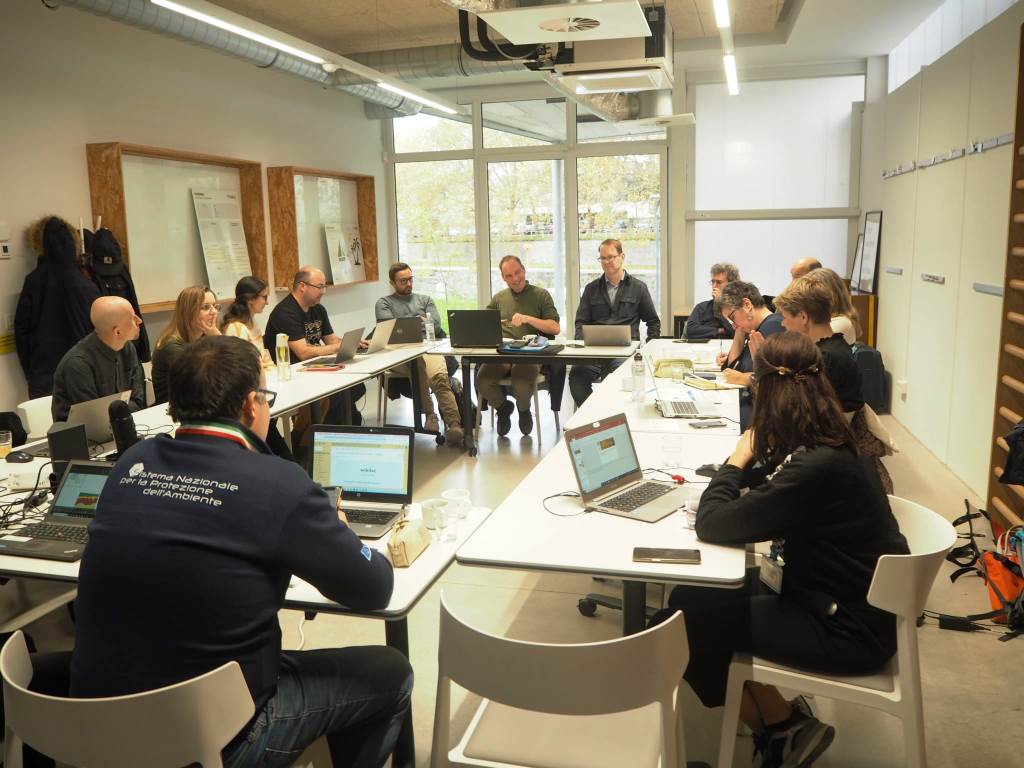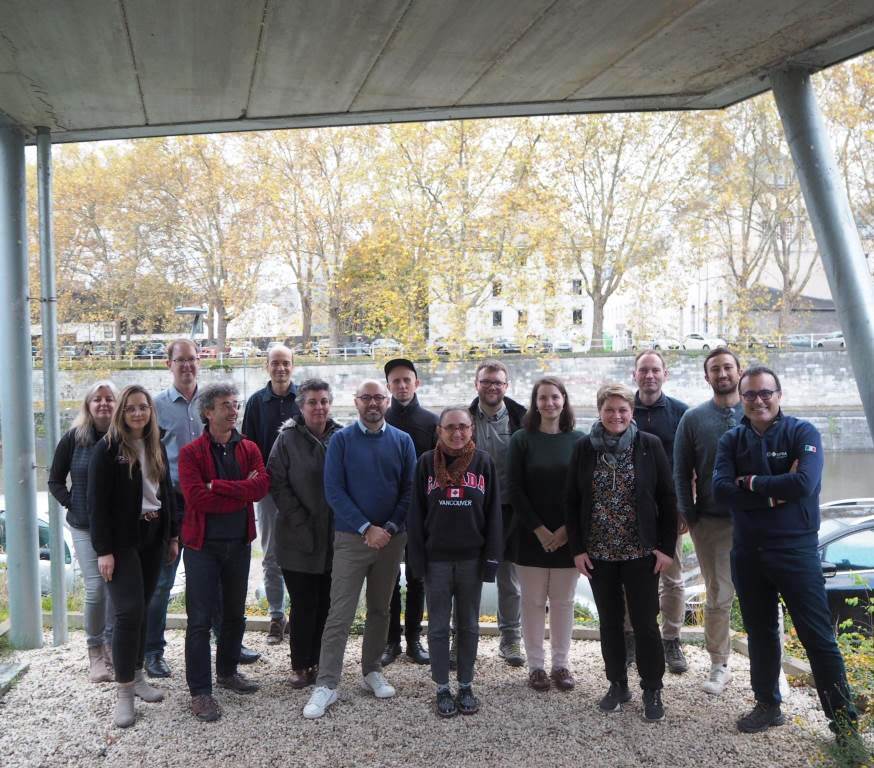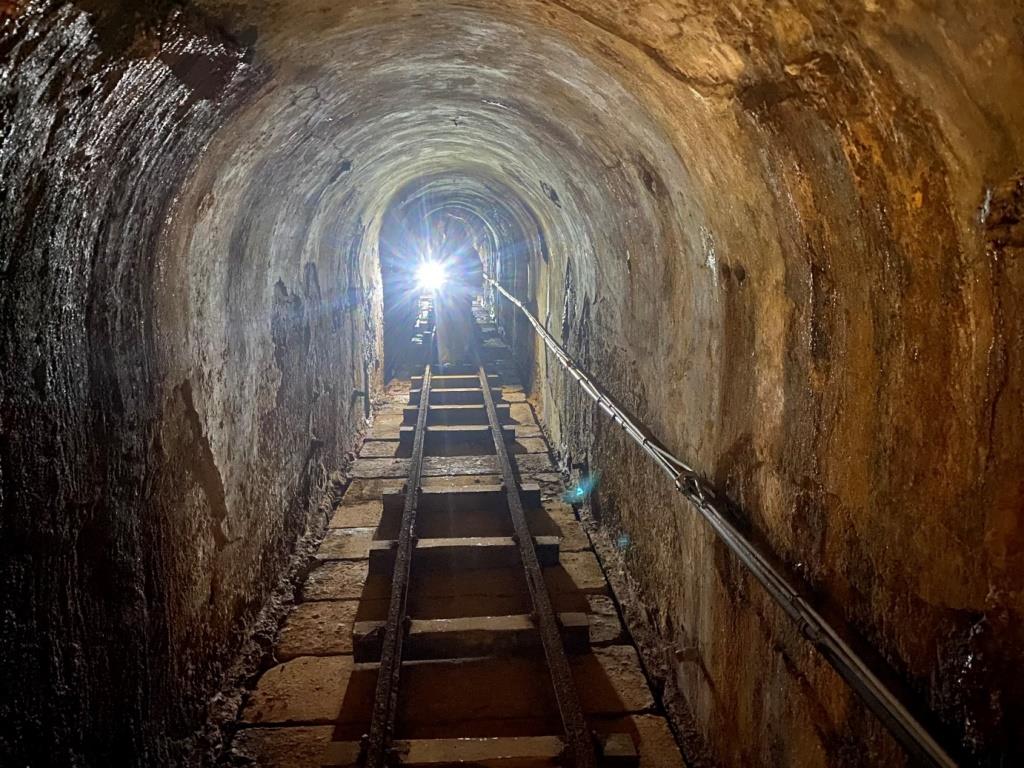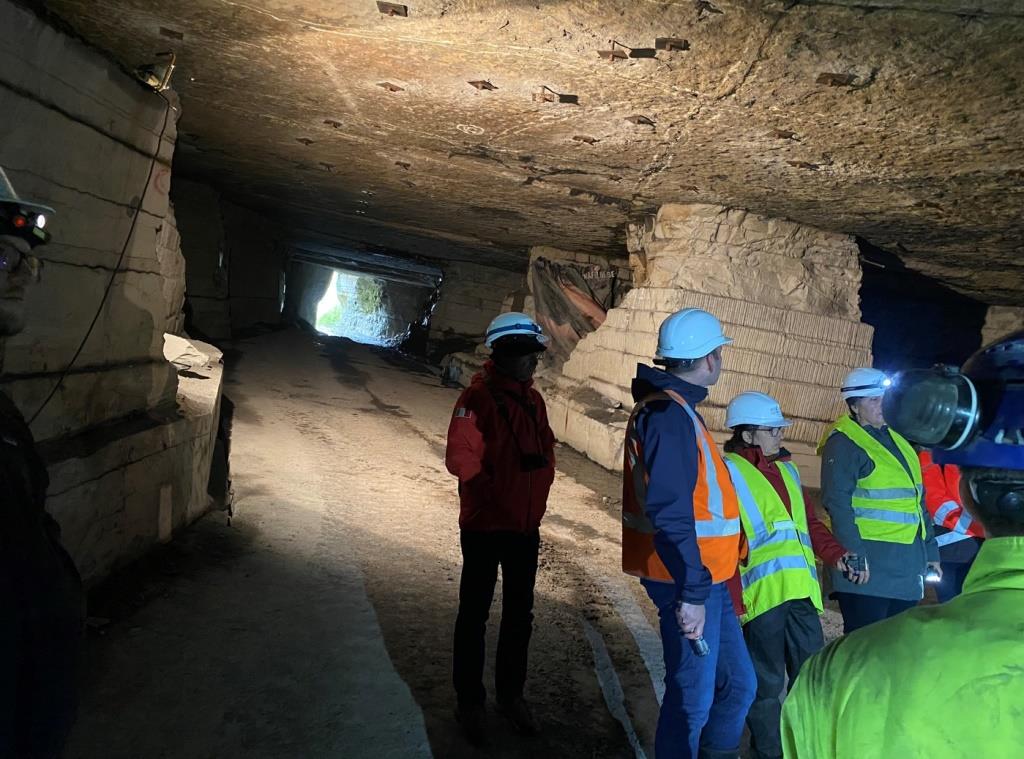The Urban Geology Expert Group (UGEG) of EuroGeoSurveys met in a hybrid format in Namur (Belgium) from 8 to 10 November 2023.
More than 30 delegates from 17 countries attended, including three delegates from the Polish Geological Institute-PIB. Our Institute was represented by: Grzegorz Ryzynski, Anna Stawicka and Jakub Kobiela - employees of the Department of Engineering Geology.
The Urban Geology Expert Group brings together experts in geological sciences in the field of urban geology in the broadest sense, i.e. geotechnics, man-made environmental risks, hydrogeology, geothermal, geological information and urban planning.
The programme of the meeting was varied and included two days of deliberations within the UGEG group and a field trip on the third day, presenting the geological structure of Devonian and Carboniferous formations in the vicinity of the city. The meeting was hosted by representatives of the Belgian Geological Survey (RBINS/GSB).

First day of the Urban Geology Expert Group (UGEG) meeting at EuroGeoSurveys in Namur

Members of the Urban Geology Expert Group (UGEG) during a break in the meeting in Namur. Second day of the meeting
The field trip during the third day of the meeting, organised by the Belgian Geological Survey, consisted of two parts. The first included a visit to the former Savena iron, lead and zinc mine in Vedrin near Namur, which is now used as a water intake for the town. Urban geology issues also focus on inactive and reclaimed mines.
The visit to the mine, which was the first part of the field trip, illustrated the need to maintain water regulation and mine drainage in order to protect the underground and above-ground infrastructure of the town, which expanded during the period of the mine's operation. In addition, the first part of the tour allowed geologists from the UGEG group to learn about the re-use of the city's underground space - the corridors of an old mine in hydrothermal veins with mineralisation of marcasite, pyrite and galena in carbonate rocks for the extraction of groundwater for public use. The water, after appropriate treatment, is supplied to the city's residents through the water supply network.

The corridors of the former mine are used for the maintenance of the underground water intake and treatment facilities. Third day of the meeting
The second part of the field trip allowed visitors to visit an operating underground Devonian limestone mine (fran). The ceiling of the limestone mine is protected by a system of protective pillars. The deposit is accessed according to the fall of the rock layers.

A view of the extraction wall. The exploitation system makes it possible to obtain blocks of stone which, after processing, can be used to obtain, for example, slabs of
The meeting in Namur should be considered very fruitful.
Text: Jakub Kobiela, Grzegorz Ryżyński, Anna Stawicka
Photos: Jakub Kobiela, Francesco La Vigna (ISPRA), Silvia Mariotti (ISPRA)














 PGI-NRI offer
PGI-NRI offer Mineral resources of Poland
Mineral resources of Poland  Oil and Gas in Poland
Oil and Gas in Poland 




 Subscribe to RSS Feed
Subscribe to RSS Feed